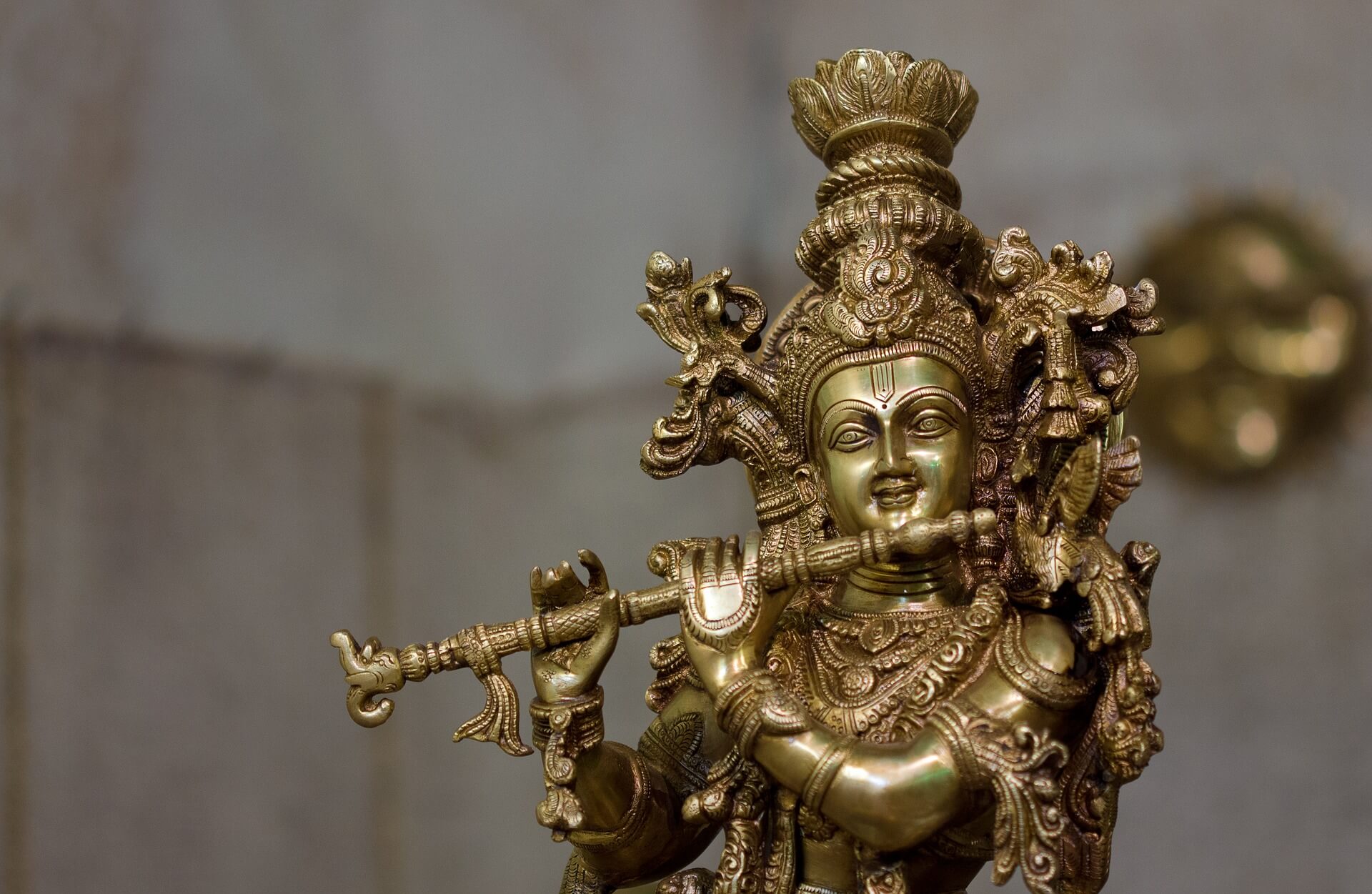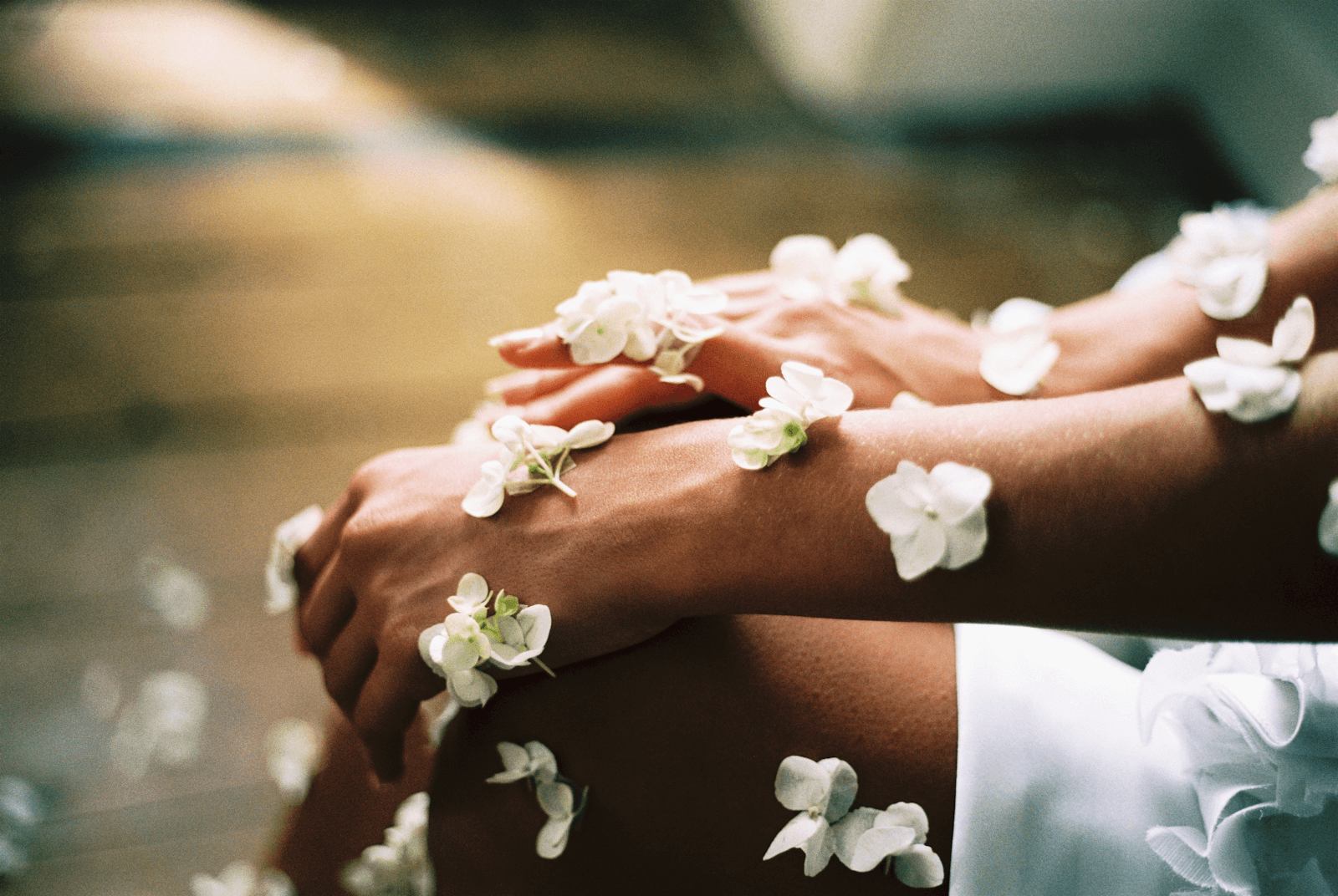When you first started yoga, did you think it was only poses done on a mat?
I know I did.
In the West, yoga has been delivered to us as a form of exercise with some meditation and deep breathing in between.
The good news? Yoga was never meant to stand on its own. In fact, it’s always been meant to be understood in the context of its sister science, Ayurveda.
You’ve probably heard of the doshas and maybe the Ayurvedic diet, but yoga’s sister science goes way, way deeper than energy types and herbal remedies.
In fact, the eight branches of Ayurveda are like a comprehensive guide to living a healthy, happy life.
For nearly three millennia, human beings have been practicing Ayurveda. Over the centuries, it has evolved into a treasure chest of holistic and healing therapies for living a long and healthy life.
Let’s learn about the eight branches of Ayurveda, so you can apply this ancient wisdom to your life, both on and off the mat. Think of this as a holistic approach to every area of your life that helps you become your most radiant, joyful self.
The Eight Branches of Ayurveda Explained
Ayurveda has eight major areas that are collectively known as Ashtang Ayurveda. My fellow yoga nerds might be thinking: “Wait, is this the same thing as Ashtanga, the eight limbs of yoga? Is this like Ashtanga Ayurveda?”
Bonus points for you, smarty pants! Just like yoga has eight limbs, known as Ashtanga, there are eight branches in Ayurveda, known as Ashtang (or sometimes, Ashtanga Ayurveda).
Here are the Eight Branches of Ayurveda
- Kaya Chikitsa (Internal Medicine)
- Baala Chikitsa (Treatment of Children / Pediatrics)
- Graha Chikitsa (Psychology)
- Urdhvaanga Chikitsa (Treatment of disease from the neck up)
- Shalya Chikitsa (Surgery)
- Damstra Chikitsa (Toxicology)
- Jara Chikitsa (Geriatrics, Rejuvenation)
- Vrsha Chikitsa (Sexual Health)
Let’s dive deeper into each of these…
Kaya Chikitsa (Internal Medicine)
Kaya Chikitsa (also known as Kaaya Chikitsa) deals with internal medicine – the diagnosis, treatment, and management of various diseases and ailments, like the common cold, cough, fever, skin issues, lung problems, bone disorders, and more. Think your general medicine doctor, but Ayurvedic style.
In Sanskirt, “kaya” means fire and “chikitsa” means treatment. Ayurveda focuses on balance within the body, so for Kaaya Chikitsa, the focus is on balancing fire, specifically agni, the digestive fire in the body. Kaya chikitsa deals with how diseases caused by an imbalance of agni – a.k.a. too much fire in the belly – can be balanced with the ayurvedic system.
Maybe there’s too much digestive fire in the physical body, which could show up when foreign bodies (like the flu) show up, or maybe the excess fire manifests as many diseases, such as skin diseases, digestive disorders, or kidney stones, to name a few. Out of the eight major disciplines of Ayurveda, kaya chikitsa will bring back health to the entire body by getting digestive fire under control.
Baala Chikitsa (Treatment of Children / Pediatrics)
Baala Chikitsa is the ayurvedic care of children. Unlike adults, children often can’t pinpoint exactly what’s going on with their body. My six year old constantly says, “my tummy hurts.” That might mean he ate something disagreeable or is coming down with the flu.
It’s up to parents and caregivers to ensure their needs are meant, and that their medicine dosages are appropriate and tolerable for their bodies. This is why Bala Chikitsa exists. It’s the branch of ayurveda specifically designed for kids, focusing on their overall health, appropriate herbal remedies and herbal medicines, and even breathing techniques.
Bala Chikitsa overlaps with gynecology and expands to care of the mother too, focusing on maternal mental health and helping them live a healthy lifestyle.
Graha Chikitsa (Psychology)
Ayurveda talks about the human body, but the mind is closely linked with the body. That’s why Graha Chikitsa was created as the psychology arm of ayurvedic science.
Psychosomatic disorders often don’t have visible symptoms in the body, but are rooted in mental health. Since Ayurveda deals with mind, body, and spirit, this branch of ayurveda was created.
The main focus of Graha Chikitsa is using herbal remedies, meditation techniques, and yogic therapies to balance the mind.
Urdhvaanga Chikitsa (Treatment of disease from the neck up)
If you’re an Ayurvedic sciences lover like me, then you may have tried one of the above the neck treatments, like the eye treatment (Netradhara), the ear treatment (Karnapoornam), or the scalp treatment (Shirolepa).
This area focuses on the treatment of disorders related to the head and neck region, including the ears, nose, throat, and eyes. It is rooted in the shalakya tantra, which deals with the eyes, ears, nose, lips, brain, central nervous system, skull and throat.
This branch of ayurveda uses herbal remedies to cleanse and treat issues above the shoulders, focused on the areas covered in the shalakya tantra.
Shalya Chikitsa (Surgery)
Ancient Indians were the pioneers in performing surgical treatment, and even, the first cosmetic surgery on the nose. These procedures happened 5,000 years ago!
The shalya tantra is the root of Shalya Chikitsa. The shalya tantra includes all surgical procedures and operative procedures, like cranial surgeries, prosthetic surgery, and cosmetic surgery.
With the use of herbal drugs and the application of ayurvedic medicine, they performed surgery shalakya tantra (along with the shalya tantra), meaning the operative procedures necessary to remove any factors producing pain or misery to the body or mind, and ultimately, improving human health.
Damshtra Chikitsa (Toxicology)
Have you ever heard of panchakarma, the ultimate Ayurvedic cleanse? Well, that popular procedure falls under this branch of ayurveda.
Damshtra Chikitsa, also known as Damstra Chikitsa and closely linked to Visha Chikitsa, is all about cleansing the body of toxins. Diseases caused by the build-up of toxins are addressed by this area of ayurveda.
As a form of preventive healthcare, Damshtra Chikitsa can help restore health by cleansing the toxins that come from air and water pollution. Ayurveda gives as much importance to purity of food, environment and quality of life, as it does to the core dosha elements of air, water, earth, and space (the elements that make up your individual ayurvedic constitution).
Jara Chikitsa (Geriatrics, Rejuvenation)
Jara Chikitsa is the branch of Ayurveda dedicated to the care of the elderly and the management of age-related health issues, as well as the science of longevity and rejuvenation. Think of this as rejuvenation therapy to help you live a vibrant life, no matter your age.
For anyone dealing with aging issues, this area helps rejuvenate health and promotes a long and healthy life. Practitioners focus on promoting longevity, enhancing the quality of life in old age, and managing age-related conditions such as arthritis, cognitive decline, and digestive issues.
Jara means “degeneration” so this branch of ayurveda literally deals with the treatment of aging. It uses various rasayanas (sometimes called rasayana chikitsa), which translates to rejuvenation therapies. The types of rasayanas used include Ausadha Rasāyana (drug based), Āhāra Rasāyana (dietary), and Achara Rasāyana (behavioral discipline). These rejuvenating therapies work to balance doshas, agni (digestive fire), and restore health with use of diet and herbal remedies.
Vrsha Chikitsa (Sexual Health, Aphrodisiac Therapy)
Ayurveda deals with all areas of health, even sexual health. Vrsha Chikitsa deals with reproductive health, fertility, and sexual well-being. It recognizes the importance of healthy sexual function in maintaining overall vitality and happiness. This includes addressing everything from urinary disorders, vaginal bleeding disorders, premature ejaculation, erectile dysfunction, and fertility.
As aphrodisiac therapy, various techniques, regimens, diets, herbal medicines, and treatments are recommended to take care of reproductive organs and sexual health. For example, various fruits and remedies will be prescribed to help increase fertility or address infertility issues.
Applying the Branches of Ayurveda to Your Life
What sets Ayurveda apart from many other systems of medicine is its holistic, all-encompassing approach.
You are unique, with your own doshic constitution and specific needs for your mind, body, and spirit.
This comprehensive system of Ayurveda offers treatments that are totally personalized to you, taking into consideration your mind and body, lifestyle, and environmental factors. This ancient system of medicine continues to be relevant today, and Ayurveda’s traditional practices and remedies have stood the test of time.
Note: It’s super important to approach Ayurvedic treatments under the guidance of qualified practitioners.
Along with the Eight Branches, Ayurveda also places a strong emphasis on preventive medicine. By promoting a balanced lifestyle, proper nutrition, and daily routines that align with your dosha, you can live your happiest, best life!
Final Thoughts
Understanding how to integrate all the areas of Ayurveda into your life can help you utilize the benefits of Ayurvedic medicine and achieve optimal health. To go deeper, join the Uplifted Community or grab my new book YOGA LIFE to learn more.
FREE Chakra Balancing Audio Track + Journaling Prompts

Next Steps
- Take my History of Yoga Course to learn all about yogic principles and how they are applied to daily life!
- Order my Yoga Life book for a practical guide to applying yogic principles to your life and constitution.
- Check out my Yoga Philosophy knowledge hub for more inspiring content
- Join Uplifted for exclusive content that you can access right from the app. Take a deep dive into your practice with me this year!
YOU MIGHT ALSO LIKE
- My Homemade Immunity Tea Recipe For Winter
- How To Do An Ayurvedic Panchakarma Cleanse At Home (Safely)
- Ayurveda Food Combining: The Key to Balanced Digestion
- How To Reduce Body Heat According To Ayurveda
- Types Of Agni In Ayurveda And How To Balance
- How To Balance Doshas And Step Into Your Powerful Self
- The Eight Branches Of Ayurveda: Guide To A Happy Life
- Yoga for Vata Dosha: Practice Poses and Tips
- Yoga for Pitta Dosha: Practice Poses and Tips
- Yoga for Kapha Dosha: Practice Poses and Tips
- Jal Neti Kriya: The Best Thing You Can Do To Clear Your Head Right Now
- My Exact Ayurveda Morning Routine For Yogis
- The 6 Stages of Disease in Ayurveda
- Discover Your Ayurvedic Constitution and Balance Your Mind, Body, and Spirit
- Understanding the Basic Principles of Ayurveda for Yogis
- 3 BEST Ayurveda Schools for a Holistic Ayurvedic Certification
- What Are Nadis? Your Guide to Energy Channels In Your Body.
- What Is An Ayurvedic Diet? Foods For Your Doshas
- A Day Around the Doshas: What I Learned When I Followed the Ayurvedic Clock
















